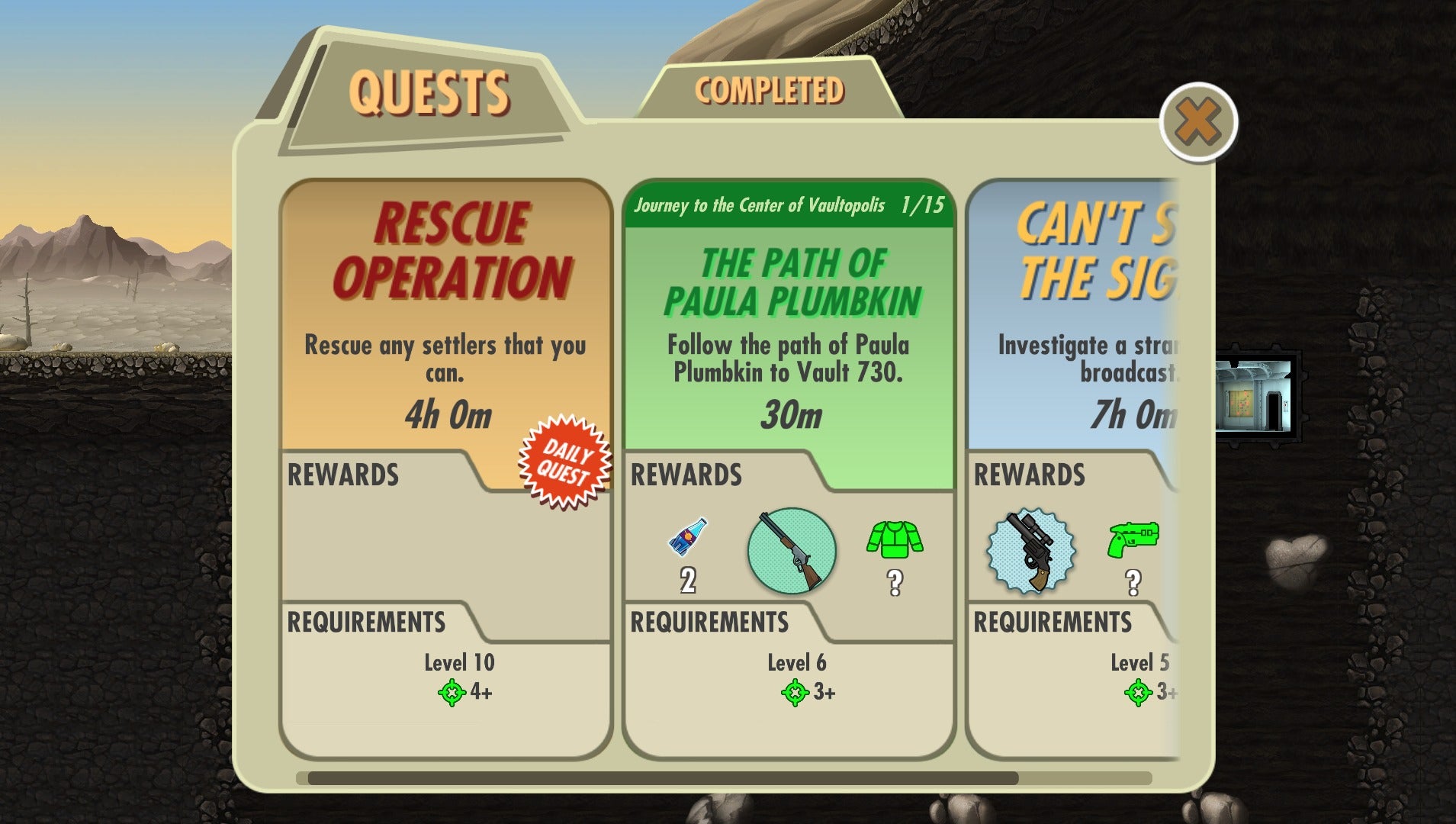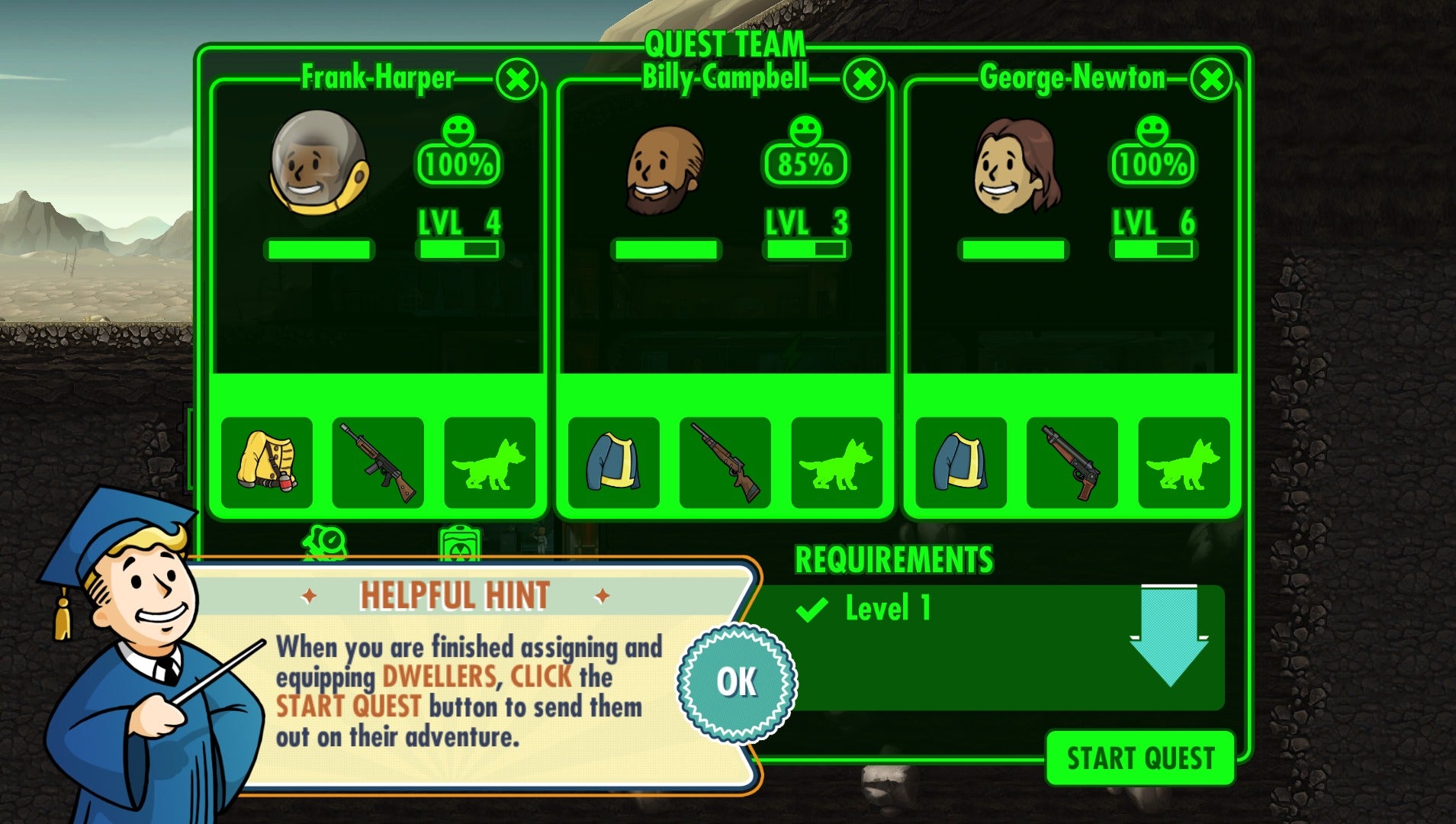It brings Fallout Shelter players a much-needed impetus to continue - I’ve often found myself wondering why I’m still here since reaching an early-game resource equilibrium - and as such we’ll be taking you through everything new in the latest version. If you’re looking to find out how Quests work and what to do with the new Combat system, you’ve come to the right place. Most Quests are also time-limited. There’s a daily quest, available for 24 hours at a time, alongside others which periodically become available - for different lengths of time, depending on the quest. Interestingly, there are also more story-driven quest lines, which unfold over multiple individual adventures such as the search for Paul Plumbkin in the A Thirst for Adventure quest series. We just so happen to have a guide on how to get more Dwellers, and likewise how to get more Caps, so give them a look if you’re eager to get started on your Wasteland adventures. That being said, the combat is still nice and simple. You can now target specific enemies by left-clicking on your character and then the enemy you’d like to target, or by clicking and dragging to drop the target symbol over enemies. There’s also a new critical hit system, which is a simple reactions-based minigame that requires you to click on the yellow icon then the arrows reach the centre. The closer they are to the centre, the higher damage you’ll do - up to a maximum of 5x the original amount. You can also use Stimpaks and RadAway during combat - and you’ll need to - so keep an eye on your individual explorers’ health as you battle. There are a few tips and tricks to bear in mind with Fallout Shelter combat:
Critical hits require you to be attacking the same target for a while before the option appears. Characters with higher Luck stats will build up critical hits more effectively. Agility determines how frequently your characters will attack - the higher the better. You’ll want to have a variety of character traits in your squad - from our experience Perception, Strength, Endurance, Luck, and Agility all appear have a part in how Quests can play out. Focus on one enemy at a time in group combat. That way you’ll minimise the incoming damage as quickly as possible by eliminating the damage dealers. Likewise, you’ll want to focus the highest damage-dealing enemy first, so keep an eye out for who’s cutting through your squad the fastest. You can heal and use RadAway during combat, but once you enter a room with enemies, you can’t leave until all of them have been wiped out. If you get to a point where you have no Stimpaks then and relatively low health, it’s better to quit while you’re ahead - unless you’re happy to pay to revive your squad. Quests normally take around 3-4 hours to reach, and 3-4 hours to return from. You can speed this process up with Nuka Quantum however, which is most frequently earned by questing anyway. One Nuka Quantum equals two hours - towards any goal that’s applicable - so if you’re just over the two hour mark, or a multiple of two, it’s far more efficient to wait until it the timer drops just under the multiple-of-two mark than to spend the excess Quantum on just a few minutes.
Looking for more guides on Fallout Shelter? Take a look at our main Fallout Shelter guide and tips page, our guide to room functions and room placement, advice on dwellers, SPECIALS, happiness and breeding, explainations of Legendary Characters, Pets, Weapons and other collectibles, how to unlock and use Mr Handy, plus how to earn Bottle Caps and Lunchboxes with Objectives, and our page on Quests, combat, and Daily Quests in Fallout Shelter, too. Likewise, you can also find new Dwellers whilst out on your adventures, and your team can also find a considerable amount of loot inside the various rooms they’ll explore. Containers like safes, cupboards, lockers and chests will sparkle to indicate the presence of loot, but do note that your team of explorers has to be inside the room in question in order to collect it.



